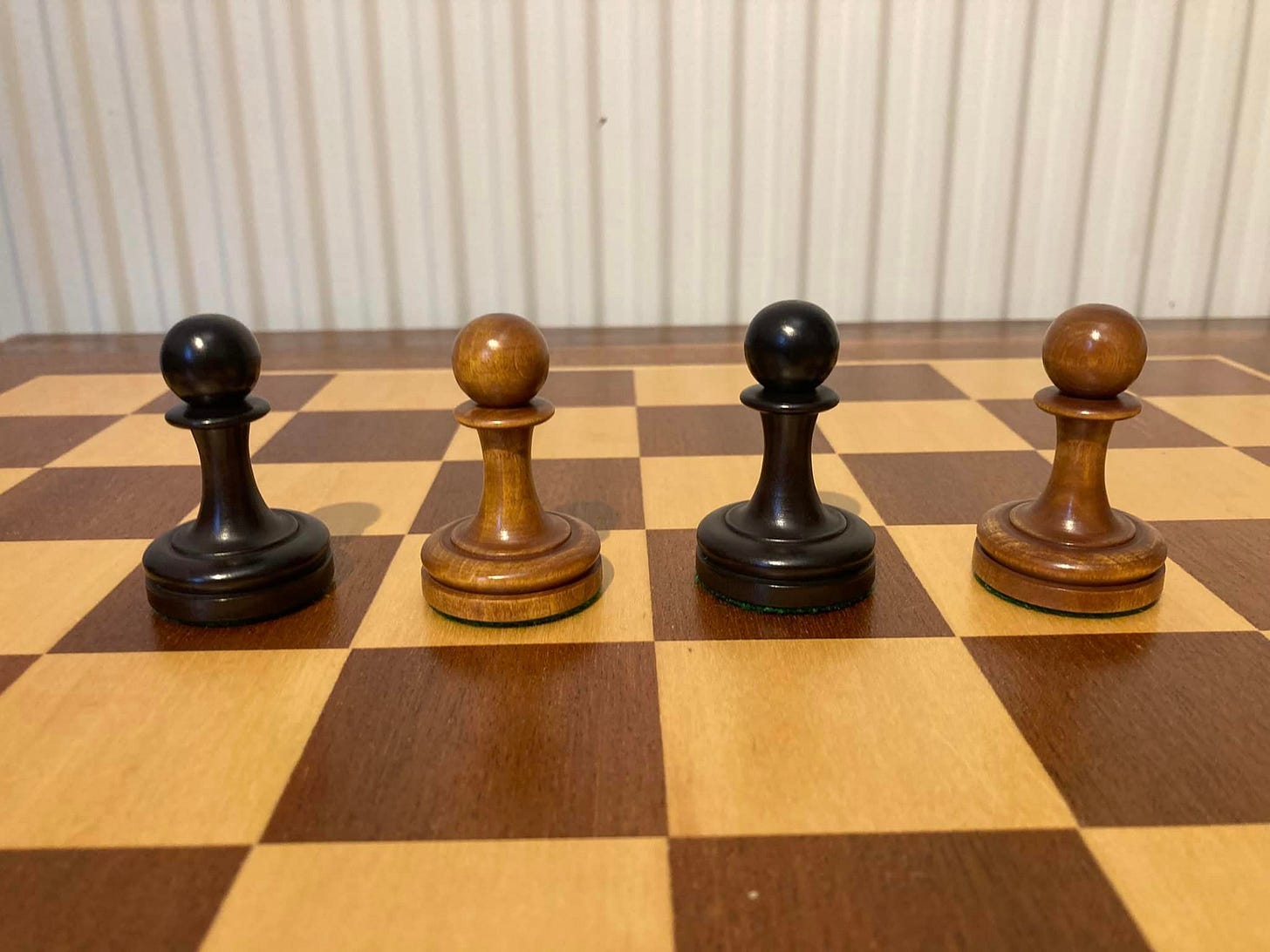I'm excited to share some beautiful pictures of a chess set I recently bought.
I previously owned just one chess set — a Staunton from the excellent "Chess and Bridge" store on Baker Street in London. After joining some chess collector groups on Facebook, I discovered a fascinating world of different designs. The old Soviet chess sets particularly caught my attention with their distinct aesthetic. These sets differ notably from classical Staunton pieces: instead of a cross atop the King, they feature a drop-shaped "crown" (likely because crosses were too closely associated with Christianity for Soviet tastes). They also often lack the traditional cut in the bishop's tiara (the headdress of a bishop).
After seeing those gorgeous sets posted by collectors, I decided to buy one for myself. Rather than seeking an original used Soviet set, I was happy with a newly produced replica. I discovered that several companies make these replicas, and they're surprisingly concentrated around Amritsar, India. The region has a rich tradition of chess piece carving, and their craftsmanship is excellent.
A member of the Chess Collectors group recommended the "Averbakh 1949" set from Indian Chess Company, which had recently been advertised in the group. The company was new — founded by the organiser of ChessBazaar, another well-known chess set retailer. Being a new venture, they offered promotional prices, which I quickly secured. The company's collaboration with Stephen Kong (known as "ChessPraxis" in chess collector circles), who personally endorsed this set, convinced me of the company's credibility.
Delivery from India to the UK took less than a week with DHL. The set arrived well-packaged with a certificate of authenticity signed by the craftsperson — a thoughtful personal touch.
The name "Averbakh 1949" comes from a photograph of the famous Grandmaster Yuriy Averbakh playing with this set during the 1949 Moscow Championship — a tournament he went on to win. Averbakh was one of the original FIDE Grandmasters and a World Championship candidate (competing in the legendary Zürich 1953 Candidates tournament). Known for his excellent endgame books, he became the first centenarian Grandmaster, living to 100 years before his recent passing.
Looking at the old photograph, the stems appear slightly thinner, but the replica otherwise matches the original quite closely.
I love the antique look of the white pieces and how they change color in different lighting — it's simply beautiful.
To showcase the full set, I'll channel my inner chess collector and share close-up photos of each piece.

My photos garnered 170 likes in the Chess Collectors group — making it one of the most popular posts in months — which suggests they meet even the most discerning connoisseurs' standards!
To connect with my previous post about engine sparring, here's my setup for playing against Leela Zero: a Nibbler UI on laptop running the Leela engine in one-node mode, paired with my Averbakh 1949 set on a mahogany board:
Links
Here are some useful links. I'm not affiliated with any of these — just a satisfied customer and reader:
Chuck Grau's blog offers fascinating articles about Soviet chess sets. I particularly recommend his interesting post about chess sets crafted in Soviet GULAG labor camps, which details a distinctive curved knight design that originated there — known as the "GULAG knight."
Indian Chess Company's site for new chess sets
Search for "Soviet chess sets" on Etsy to find vintage sets — they were mass-produced, making them readily available today. This is how Chuck Grau built much of his collection!
I hope you've enjoyed these photos of my new chess set. Stay tuned and subscribe for more chess-related content!














That's a beautiful set. I have a replica and a couple of vintage sets...I, too, have always loved this general design!
Thanks for the links. I planed on buying a nice set but had no idea where to look for one. 🙏